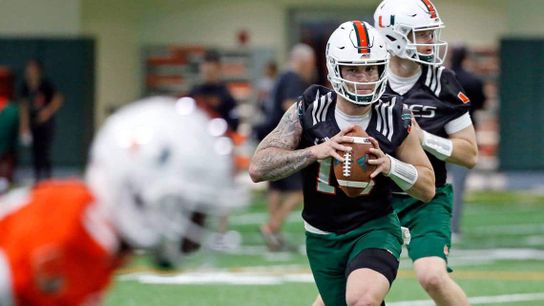Update: The NCAA has announced changes to its transfer waiver protocol. The changes are intended as "minor adjustments to the waiver process intended to clarify the requirements, prompt more involvement from athletics directors and give guidance to members as they submit waivers."
In short, the NCAA will now require more documentation from the departing school in order for transferring players to be eligible to play immediately. For instance:
When a school requests a waiver because it asserts a student-athlete no longer has the opportunity to participate at his or her previous school, the new school must provide proof that the student-athlete is in good academic standing and meeting progress-toward-degree requirements at the new school and a statement from the previous school’s athletics director indicating whether the student could return to the team; whether the student was dismissed from the team and the date of dismissal; whether the student was in good academic standing at the time of departure; and the reasons the student gave the previous school for the transfer.
In cases in which the student-athlete transferred because he or she is the victim of egregious behavior directly impacting his or her health, safety or well-being, the new school must continue to provide objective documentation of the behavior and how it impacts the health, safety or well-being of the student-athlete. In addition, the new school also must now provide a statement from the previous school’s athletics director explaining why the student-athlete indicated he or she is transferring and proof that the student-athlete is in good academic standing and meeting progress-toward-degree standards at the new school.
In cases where a student-athlete transfers because of the recent injury or illness of an immediate family member, the new school must provide contemporaneous medical documentation from the treating physician showing how the family member is debilitated; an explanation of the student-athlete’s role in providing care; confirmation from both the athletics director and faculty athletics representative that the student-athlete will be allowed to depart the team to provide care; a statement from the previous school’s athletics director explaining why the student-athlete said he or she was transferring; and proof that the student-athlete is in good academic standing and meeting progress-toward degree at the new school. The transfer must occur within or immediately after the academic year after learning of the injury or illness, and the guideline requires the new school be within 100 miles of the immediate family member.
Schools must provide similar documentation when a player transfers closer to home because of their own illness or injury.
Original article below.
The NCAA on Wednesday will announce it has tightened the loophole that has seen the number of immediate-eligibility waivers spike over the past year-plus, according to documents obtained by USA Today.
Last year, the NCAA applied a new policy that allows waivers to be heard and granted by the NCAA's Committee on Legislative Relief under the guidelines of “documented mitigating circumstances outside of the student-athlete’s control and directly impacts the health, safety or well-being of the student-athlete.”
Moving forward, the guideline would be changed to (emphasis added) “documented extenuating, extraordinaryand mitigating circumstances outside of the student-athlete’s control that directly impacts the health, safety or well-being of the student-athlete.”
While the NCAA hoped to make life easier on athletes by liberalizing its transfer rules, in practice the process seemed arbitrary, often boiling down to which attorney the transferring player's family hired.
For instance, Tate Martell was approved for immediate eligibility upon transferring from Ohio State to Miami, while James Hudson's waiver in leaving Michigan for Cincinnati was denied because, according to him, he did not go public with his mental health struggles in Ann Arbor.
According to the Associated Press, the 68 percent approval rate was actually slightly down from the previous four years, but the 250 requests across all sports in 2018-19 was an increase by 100 or more from the year prior.
By making it more difficult to transfer and play immediately, perhaps players would be less likely to enter the transfer portal in the first place.
The NCAA Division I Council is expected to formally announce the change today. The group is scheduled to meet in Indianapolis on Wednesday, and Division I compliance staffs were made aware of the proposal last week, according to USA Today.
